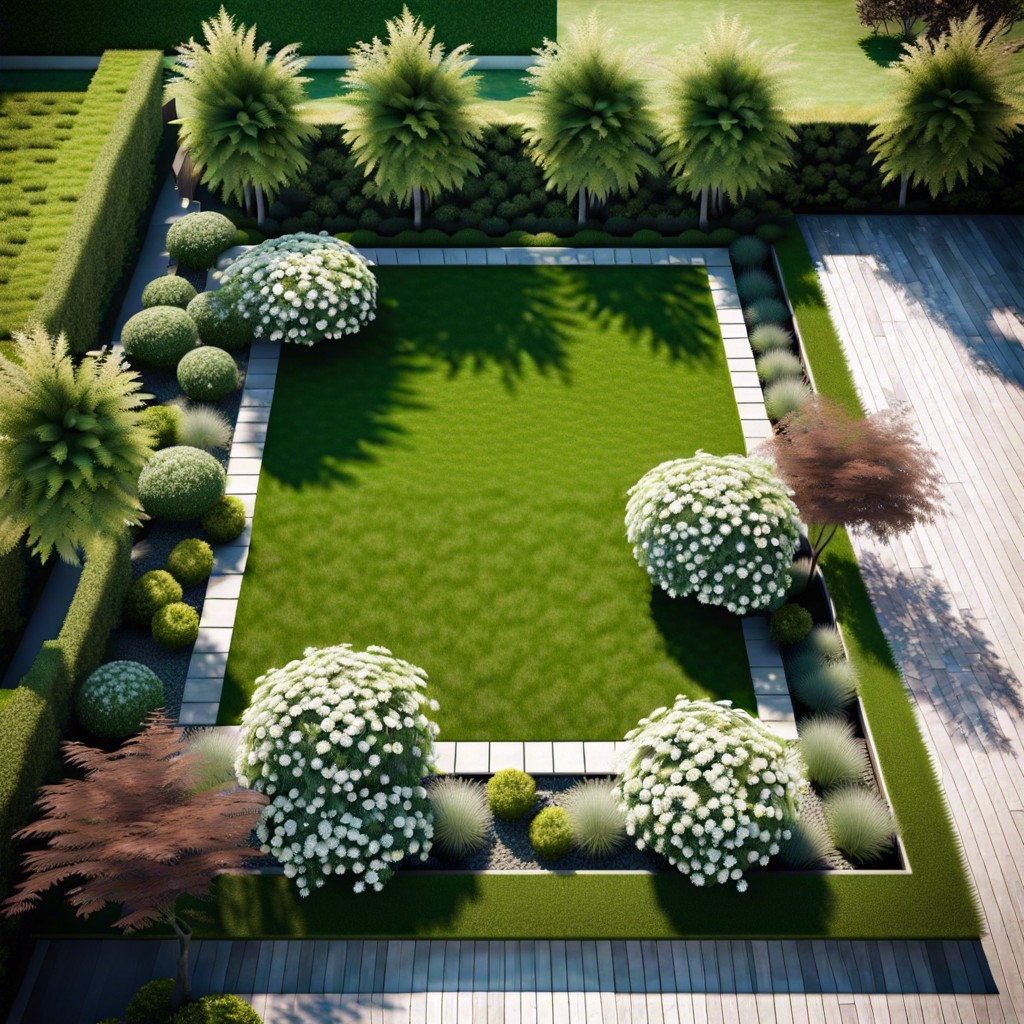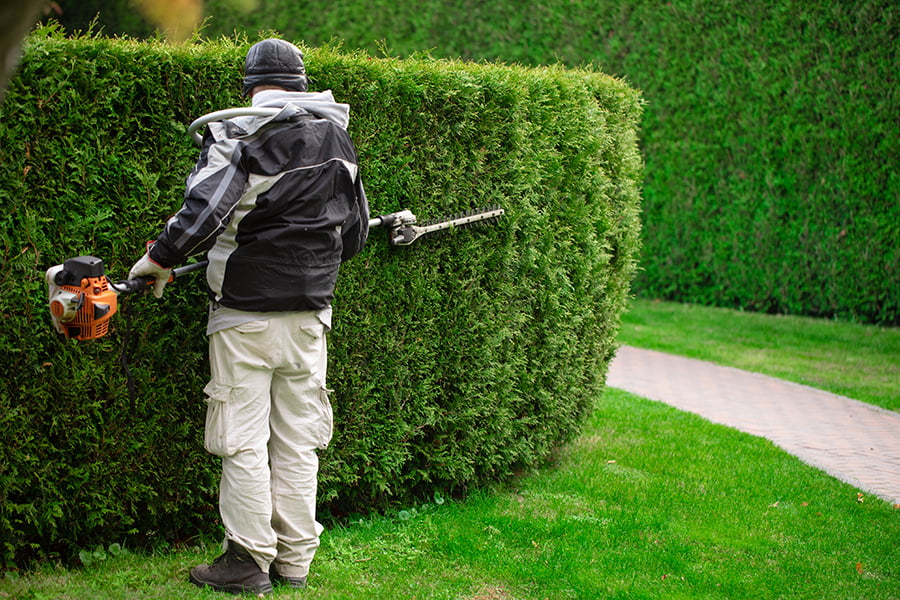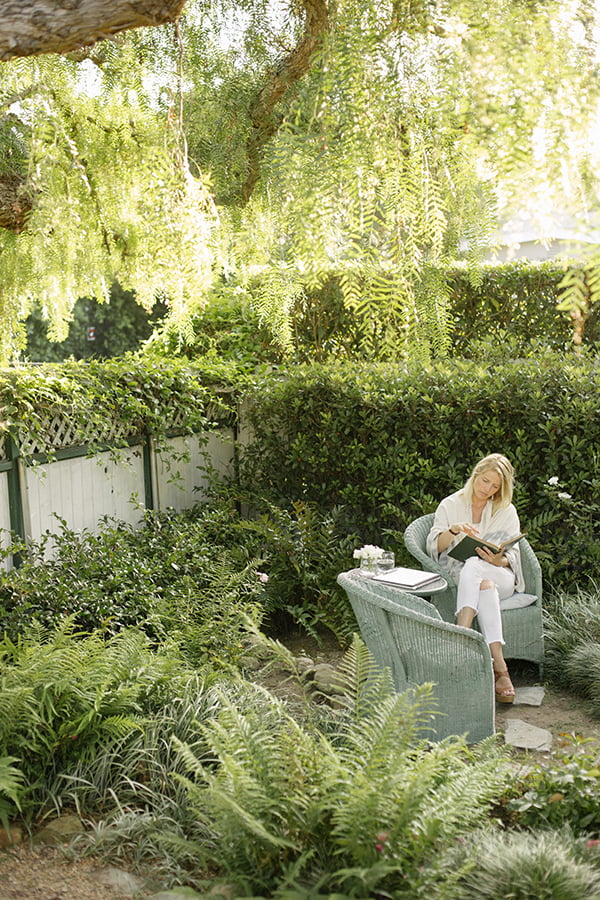Creating a private oasis in your backyard can transform your outdoor space into a secluded retreat; our article guides you through the essential landscaping strategies to achieve privacy in your garden with ease.
Key takeaways:
- Assess your space and privacy needs before starting landscaping.
- Choose evergreen plants for year-round privacy.
- Use climbing vines and hedges as natural walls.
- Combine hardscape and softscape elements for a balanced look.
- Customize landscaping solutions to address specific privacy challenges.
Assessing Your Space and Privacy Needs

Before diving into planting or building structures, carefully consider your outdoor area to determine where and how much privacy is desired. Start by walking through your space, noting which areas are visible from the street, neighboring windows, or public spaces. These observations help to identify key spots where privacy measures are most needed.
Think also about the height and density of coverage you’re seeking. If blocking out an adjacent two-story building, you’ll need taller solutions than if you’re merely looking to create a secluded garden nook. Also, consider the direction of prevailing winds and sunlight throughout the day, as this will affect both plant health and the shadows cast by privacy features.
Reflect on the purpose of your space. Will it be a serene retreat, a play area for children, or an entertainment zone? This will influence the type of privacy elements you incorporate. For instance, a secluded reading area might benefit from the dappled shade of a light canopy, whereas a private sunbathing spot may require denser foliage.
Finally, consult any local regulations regarding fence heights and hedge boundaries to ensure your landscaping plans are compliant. Take note of where utilities are to avoid any future issues when planting trees or installing structures. With these considerations in mind, you’ll be well on your way to creating a private, peaceful oasis that meets your unique needs.
Choosing the Right Plant Varieties for Year-Round Privacy
When selecting plants for privacy, it’s essential to opt for evergreen species to ensure seclusion throughout the year. Trees like the arborvitae provide a dense screen and grow tall, making them an excellent choice for peripheral plantings. Shrubs such as boxwood can also be shaped into lush, compact hedges ideal for smaller spaces.
For a varied and aesthetically pleasing barrier, consider mixing different types of greenery. Layer plants by height, with tall trees at the back and shorter shrubs in front. This not only adds depth but improves the toughness of your privacy screen against strong winds or heavy snow.
Remember to check the growth rate and mature size of your chosen plants to avoid overcrowding and to reduce the need for frequent trimming. Your regional climate and the amount of sun or shade your yard receives are critical factors as well. Select plants that are adapted to your environment to ensure they thrive and provide a robust, living barrier for your solace.
Finally, think about the maintenance involved. If you’re not keen on regular pruning, choose lower-maintenance varieties. Plants like the Italian cypress or bamboo (though be cautious with its invasive nature) require minimal upkeep once established and still offer considerable privacy.
Incorporating Climbing Vines and Hedges As Natural Walls
Climbing vines are a versatile option for creating a green canopy that ensures privacy while adding an aesthetic charm to your garden. They grow vertically, which means they don’t take up much horizontal space, making them ideal for gardens where ground space is precious. To use climbers effectively, install structures like trellises or pergolas where the vines can twine. Examples of fast-growing vines include ivy, which can quickly cover a wall, or jasmine, known for its fragrant blooms.
For those looking for a more structured barrier, hedges are the classic choice. They are effective at blocking noise and wind, in addition to providing privacy. Boxwoods and yews can be trimmed to precise shapes and heights, facilitating a more formal garden look. If you prefer a softer, less manicured appearance, opt for shrubs like arborvitae or privet that naturally grow dense and can be allowed to reach their full height.
When selecting plants for your natural walls, consider the local climate and soil conditions. Choose species that are well-adapted to your area to ensure their healthy growth and longevity. Also, take note of the growth rate and maintenance needs of your chosen plants. Faster-growing plants will provide privacy more quickly, but might require more frequent trimming to keep them in bounds.
An essential aspect to remember is that while these living barriers can enhance the seclusion of your space, the full effect might take some time to establish. However, this gradual maturing process adds value and beauty to your property over time.
Combining Hardscape and Softscape Elements for Privacy
In the quest for seclusion and serenity, blending hardscape with softscape offers a harmonious balance of natural and structural elements. Hardscape, the inanimate and structural features of landscaping like fences, walls, and trellises, provides immediate privacy. On the flip side, softscape, which includes the living, horticultural aspects such as shrubs, trees, and vines, brings a more organic feel to your private oasis.
Starting with a sturdy trellis or fence creates an instant screen and serves as a perfect support for climbing plants. As these climbers grow, they weave a verdant tapestry that muffles noise and blocks curious glances, while also softening the hard lines of the structure.
For a softer partition, consider tall ornamental grasses that sway with the wind, offering a dynamic and natural barrier. These grasses can surround a pergola or a gazebo, enhancing the sense of a private retreat within your garden.
Water features, strategically placed, can provide not only visual but also auditory privacy. The gentle sound of a waterfall or a fountain can mask neighborhood noises, creating a peaceful backdrop for your secluded haven.
Incorporating raised planters can also elevate your greenery, contributing to the layered effect of privacy while adding a touch of sophistication to your design. By combining these elements thoughtfully, you create a multifaceted and cohesive landscape that prioritizes privacy without sacrificing style.
Addressing Privacy Challenges With Customized Landscaping Solutions
Every outdoor space comes with its own set of privacy considerations. Perhaps your home is close to a neighbor’s window, or maybe you’re dealing with a street-facing backyard. That’s where landscaping tailored to your specific needs can play a pivotal role in creating the secluded sanctuary you’re after.
Firstly, consider the angles of exposure in your yard. A strategically placed pergola adorned with fast-growing vines can both elevate the aesthetics of your garden and provide a shield from prying eyes, especially in elevated areas. Pergolas can also add vertical space for plants, maximizing privacy without taking up much ground area.
Secondly, don’t underestimate the power of water features. A well-designed fountain or waterfall can be about more than just visual appeal; it’s the sound of cascading water that can help obscure unwanted noise from outside your serene retreat.
In areas where planting greenery isn’t possible, think about utilizing privacy screens. These can be made from a variety of materials, such as lattice panels that can support climbing plants, adding a green touch to these structures over time.
Lastly, remember that the key to effective privacy landscaping lies in the layers. A mix of trees, shrubs, and ornamental grasses at varying heights will create a more natural and appealing barrier. It’s like painting on a canvas, except your hues and textures are the flora that not only look good but keep your space just for you.
The secret to achieving the perfect balance between form and function in privacy landscaping is to tailor the solutions to your unique space – taking into consideration the local climate, the layout of your property, and the level of upkeep you’re willing to commit. Harness the beauty of nature and the ingenuity of design to turn your privacy challenges into lush, serene living spaces.




